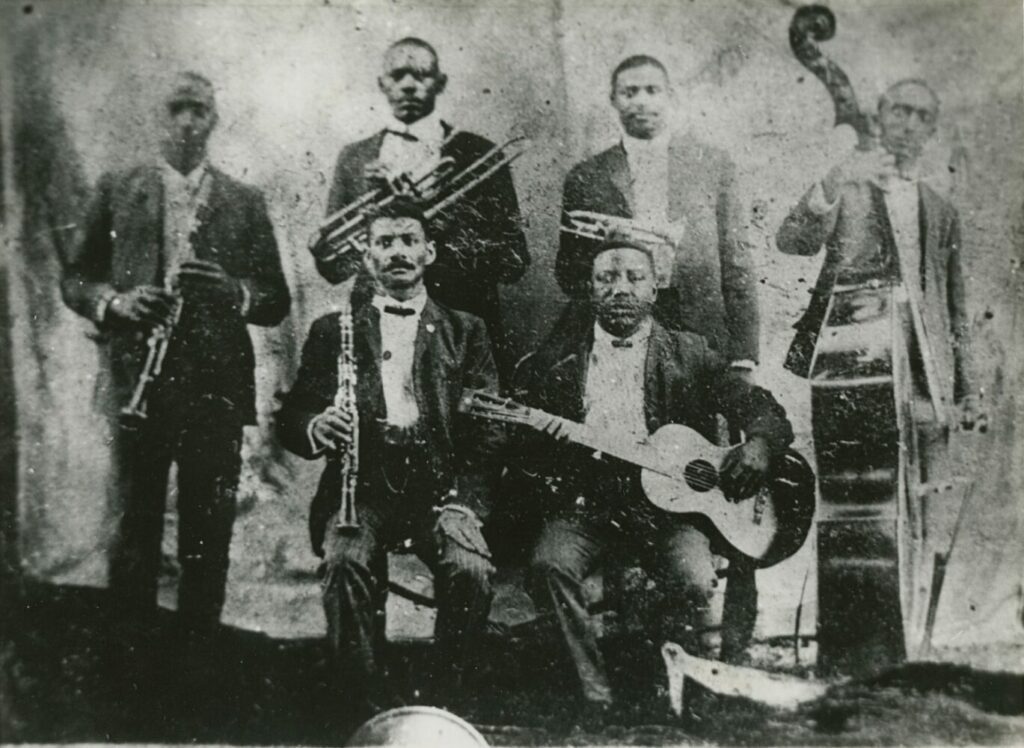Introduction

In the early 20th century, Black people were searching for a way to disprove the dehumanizing portrayal of them in the media. To create their new image, many people turned to music in order to showcase their musical talents and send a message to the world. Jazz was one of the new genres pioneered by Black musicians. The first ever genre of jazz, Trad Jazz, laid the foundation for the rest of the music of the 20th century, and it changed the United States’ music for generations to come.
History and Origins
Jazz was born in New Orleans, Louisiana. At this time, New Orleans was the cultural hotspot of the United States; there were Spanish, Creole, French, African, and British people interacting in various ways. When slavery was legal, the white owners allowed slaves to have one day to embrace their own cultures and practices in a place called Congo Square. As stated in the video to the right, the music and dancing found in Congo Square seemed to give a realistic glimpse of Africa and African life. This created a mix of the cultures stated above which would eventually produce jazz.
Moreover, around the same time that jazz was coming into fruition, the popular ragtime genre was in full swing. Ragtime’s star instrument was the piano, and the syncopated rhythms would carry over into Trad Jazz. Additionally, the heart-wrenchingly beautiful blues genre would contribute to the creation of jazz. The flattened 3rd, 5th, and 7th scale degrees can still be found in many genres of jazz, but this is a blues genre trope.
"The whole concept of improvision is a part of American life."
Wynton Marsalis in Congo Square clip Tweet
Characteristics of Trad Jazz
Like many African American genres, the beauty of trad jazz is contingent upon the musicians’ ability to improvise. Improvision is the ability to create new and unplanned sounds and patterns on the spot. This adds creativity and uniqueness to the piece.
Another key element of New Orleans jazz is the Big Four. Many musical scholars give credit to Buddy Bolden (pictured above under the introduction section) for creating the Big Four, and Bolden is also considered the person to create and popularize jazz music. The Big Four is a rhythmic style in which the fourth beat in every two measures is emphasized. The video to the left goes further in detail about what this means and sounds like.
Conclusion
Jazz has a unique and complex cultural history. It was born out of despair and a dark period in United States’ history, but it gave hope to Black people in a way that few things could. Jazz has become one of the quintessentially American music genres, thanks to the creative minds of those forced to make a way out of no way. Jazz is where the past, present, and future meet by pulling on classic Black music tropes such as improvising, introducing new ones like the Big Four, and setting the tone for the evolution of Black music to come.


